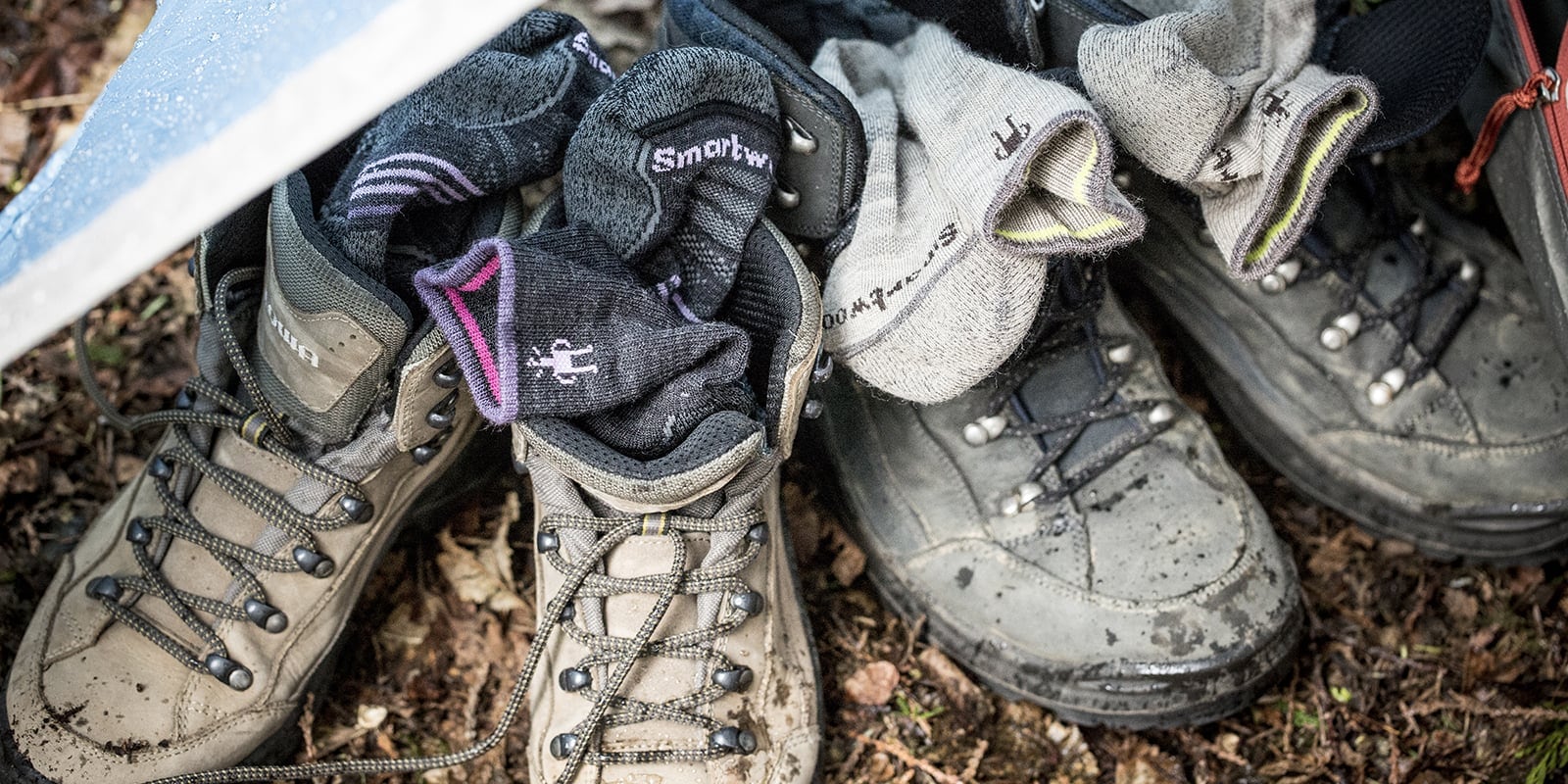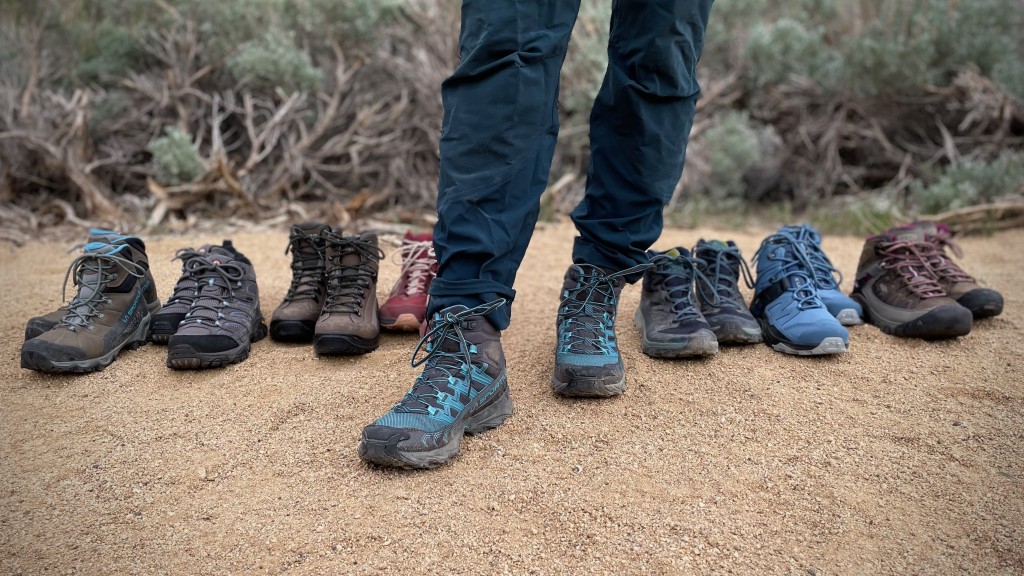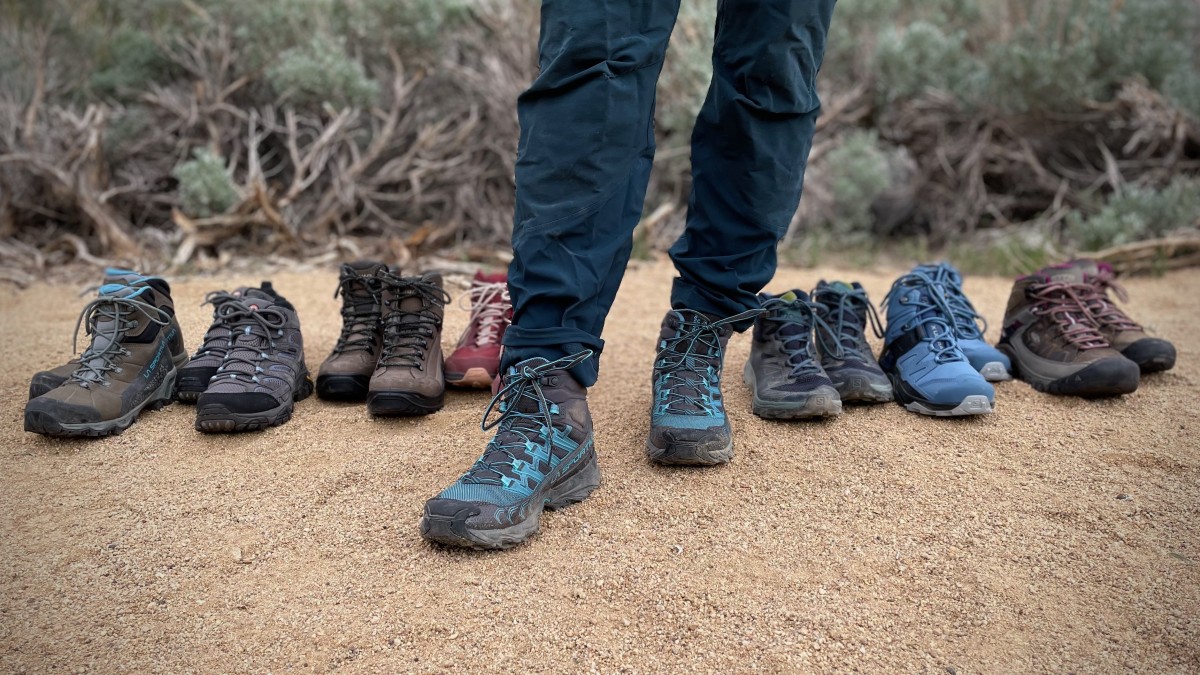Mountaineering boots are designed for technical climbs, offering stiffness and durability. Mountaineering Boots Vs Hiking Boots, in contrast, are for trail comfort and support on less rugged terrains.
Choosing the right footwear for outdoor adventures is crucial to enhance experience and safety. Mountaineering boots stand out with their stiff construction suitable for ice and rock climbing, compatible with crampons, and providing ankle protection in challenging environments. They are built to withstand the rough conditions of high-altitude and glacial treks.
Hiking boots, on the other hand, focus on comfort during long walks, breathability, and good traction for diverse, less technical trails. These boots typically feature a more flexible sole and lighter design, making them ideal for day hikes or backpacking trips. Selecting between the two depends on the specific needs of the terrain and the type of outdoor activity planned.

Credit: www.rei.com
The Essential Gear: Feet First
Every step counts on the trail, and the right footwear can make a difference between a good and a bad experience. Mountaineering boots and hiking boots serve distinct purposes. They cushion your feet and provide essential support to tackle diverse terrains. Before embarking on an outdoor journey, understanding the difference between these boots ensures your feet are well cared for.
Importance Of Proper Footwear In Outdoor Activities
Choosing the right footwear is crucial for outdoor safety and comfort. The terrain, weather, and duration of your activity will affect your choice. Here’s why proper footwear matters:
- Support: Reduces the risk of ankle rolls and injuries.
- Protection: Guards against sharp rocks and rugged surfaces.
- Traction: Provides grip to prevent slips and falls.
- Comfort: Prevents blisters and sore feet during long treks.
The Anatomy Of Outdoor Boots
Boots are designed to tackle specific outdoor challenges. Understanding their anatomy helps you choose wisely. See the differences below:
| Boot Feature | Mountaineering Boots | Hiking Boots |
|---|---|---|
| Upper Material | Durable, often waterproof leather | Lightweight materials, sometimes with waterproof membranes |
| Sole Rigidity | Stiff for crampon compatibility | Flexible for ease of walking |
| Ankle Support | High and tight for protection | Lower, comfortable for mobility |
| Insulation | Thick insulation for cold environments | Less or no insulation for moderate climates |
| Lacing System | Secure, can be complex, locks the foot in place | Simpler, for quick adjustments and comfort |
Climbing Heights With Mountaineering Boots
For those seeking summits, the right footwear defines the journey. Mountaineering boots support adventures that scale new heights, and here’s why they’re essential.
Design And Build For Rugged Terrains
Mountaineering boots are crafted for the toughest paths. Their design outshines hiking boots in ways that matter:
- Durable materials resist sharp rocks and ice.
- A stiff sole grips onto uneven surfaces.
- High-ankle coverage protects against sprains.
- Insulation keeps feet warm in cold climates.
Features Specific To High Altitude And Technical Climbs
When the air thins, mountaineering boots bring their ‘A’ game:
| Feature | Benefit |
|---|---|
| Crampon compatibility | Allows for secure attachment on ice. |
| Thick insulation | Preserves heat at high altitudes. |
| Gaiter attachments | Prevents snow from entering the boot. |
| Rigid construction | Supports technical climbs. |
Above the treeline, features like these can make or break a climb.
Treading Trails With Hiking Boots
Hiking boots are a must for adventure-seekers. These boots protect and support your feet on various terrains. They are lighter than mountaineering boots.
Comfort And Flexibility For Long Walks
Hiking enthusiasts value comfort. Long walks demand boots that can bend and flex. This reduces foot fatigue. It allows you to hike further with ease. Let’s explore:
- Cushioned midsoles provide extra comfort and shock absorption.
- Flexible soles make walking on uneven surfaces easier.
- Breathable materials keep feet dry and reduce blisters.
Key Characteristics Of Hiking Boots
| Feature | Description | Benefit |
|---|---|---|
| Material | Leather or synthetic | Durability and water resistance |
| Ankle Support | Low to mid-height collars | The balance between support and mobility |
| Lacing System | Usually with eyelets or hooks | Adjusts for fit and comfort |
| Outsole | Rubber with deep lugs | Good traction on different terrains |
Hiking boots have features that make trails enjoyable. Good ankle support stabilizes your steps. Protective toe caps guard against rocks. The right tread pattern grips the ground beneath you. Choose boots that will journey with you on every path.
Mountaineering Boots Vs Hiking Boots: Spotting The Differences
Mountains call for specialized gear, and choosing the right footwear is crucial. Mountaineering boots and hiking boots serve different purposes. Understanding their distinctions helps you pick the right pair for your adventure.
Material And Durability Contrasts
Mountaineering boots use robust materials like leather or synthetic composites. This makes them durable and suitable for extreme conditions. Hiking boots tend to utilize lighter materials for comfort and breathability on trails.
Sole Structure And Traction Comparison
- Mountaineering boots boast stiff soles. They offer superior traction on icy terrain.
- Hiking boots have flexible soles. This provides comfort during long walks on varied surfaces.
Ankle Support And Boot Weight
| Boot Type | Ankle Support | Weight |
|---|---|---|
| Mountaineering Boots | High | Heavier |
| Hiking Boots | Moderate | Lighter |
Compatibility With Crampons And Climbing Gear
Mountaineering boots are designed to accommodate crampons. They ensure safety on ice and steep rocks. Hiking boots lack this feature, focusing more on trail comfort.
Choosing The Right Boot For Your Adventure
Selecting the ideal boot for your outdoor excursion is crucial for comfort and safety. Whether scaling rocky summits with mountaineering boots or trekking on forest trails with hiking boots, make an informed choice with these insights.
Assessing Your Outdoor Goals
Understanding your activity level and adventure type is the first step.
- Mountaineering boots excel for challenging ascents with crampons.
- Hiking boots are versatile for trails and moderate treks.
Considerations For Fit, Season, And Terrain
Ensure boots match your environmental and physical needs.
| Terrain | Fit | Season |
|---|---|---|
| Rocky/Icy | Snug, no movement | Cold, Insulated |
| Muddy/Grassy | Roomy, comfortable | Mild, Breathable |
Match the boot stiffness to the terrain complexity. For lengthy hikes, search for weather-appropriate features.
Expert Recommendations And User Reviews
Professional insight guides optimal boot selection. Check for top-rated boots by experts in the field.
- Read reviews from seasoned mountaineers.
- Explore discussions on hiker forums.
- Consult with outdoor gear specialists.

Credit: www.outdoorgearlab.com
Maintaining Your Boots For Longevity
Whether scaling snowy peaks in mountaineering boots or trekking trails in hiking boots, both adventures rely on durable footwear. Keeping boots in prime condition is crucial. Prolong their life with proper maintenance.
Cleaning And Care Routines
Regular cleaning is the backbone of boot longevity. After each use, remove debris and dirt to prevent damage. Use a soft brush or cloth to clean the surface.
For a deeper clean:
- Remove laces and insoles.
- Wash boots with a mild detergent.
- Air dry away from direct heat.
The Importance Of Regular Waterproofing
Waterproofing is vital for keeping feet dry and boots intact. Apply a waterproof treatment designed for your boot’s material. Do this periodically and after cleaning.
This keeps the material pliable and water-resistant:
- Clean the boots thoroughly.
- Apply waterproofing agent evenly.
- Let it set as recommended before use.
Boot Repair And When To Replace Them
Regular inspections catch early signs of wear. Look for separating soles, damaged leather, or worn linings. Many issues can be repaired.
Consider professional repair for:
| Issue | Action |
|---|---|
| Loose Soles | Resole or re-glue |
| Torn Leather | Patch or stitch |
| Breached Waterproofing | Reapply product |
If boots are beyond repair, it’s time to replace them. This ensures safety and comfort on future excursions.

Credit: www.outdoorgearlab.com
Frequently Asked Questions For Mountaineering Boots Vs Hiking Boots
Can Mountaineering Boots Be Used For Hiking?
Mountaineering boots can be used for hiking, especially on rugged terrain. They offer durability and support but may be too stiff and heavy for casual trails. Choose lighter boots for typical hiking paths.
What Makes Mountaineering Boots Different?
Mountaineering boots are designed with stiff soles for support on rugged terrain and feature enhanced ankle support for stability. They are also insulated for warmth and built with durable materials to withstand harsh conditions.
Why Are Mountaineering Boots So Stiff?
Mountaineering boots are stiff to provide stability on rugged terrain and support the ankle. Stiff soles enhance crampon compatibility and protect feet from rocky surfaces.
What Is The Difference Between Hiking And Mountaineering?
Hiking typically involves walking on trails or varied terrain for leisure or exercise. Mountaineering involves climbing mountains, often requiring technical skills and specialized equipment.
Conclusion
Selecting the right footwear is vital for any outdoor adventure. Mountaineering boots stand out for their durability and support in rugged terrain while hiking boots offer comfort and flexibility on less demanding trails. Tailor your choice to your activity’s demands, and step into nature with confidence and the appropriate boot for your journey.
Embrace the trails with the knowledge that you’re well-equipped for every step ahead.
